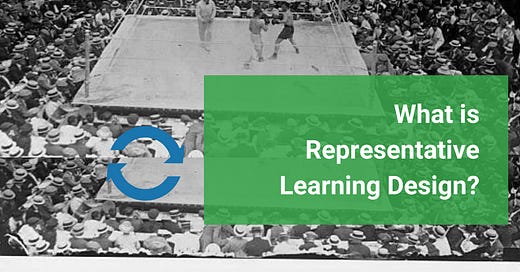What is Representative Learning Design?
Representative learning design is about replicating the most important game-like conditions during practice. Part 1 of 2.
Part one is a foundational overview of the concept and why it’s important for martial artists. Part two is about (a) existing RLD instruments and (b) specifics about how RLD applies to martial arts training.
“Realistic.”
How do you think of this concept?
Many seem to think of realism like the way you’d say a painting is realistic. Or a movie script—a piece of dialog.
If you pay attention to the way people talk in movies, dialog is only realistic insofar as it convinces you that it’s real people talking.
It’s not how people actually talk. They’re circular, erratic, their pace and peak is all over the place…it sounds realistic in one sense, but it does not represent how people actually talk. It’s stage magic.
It is the same thing with a painting. A painting looks realistic, but it’s not like a you, in person, perceiving the real thing. You can always tell it’s a painting.
Martial artists of all types seem to judge practicality and realism based on an aesthetic quality, a personal and unexamined sense of “what it should look like.” Their training looks like a series of short fight choreography sequences.
We’ve all seen a movie where the fight scenes appeared realistic. They looked like they could have occurred in real life. They are realistic in the way paintings are realistic.
And yet, somehow, even if we were to watch the same sequences played out by live actors in real life, we can still detect they are fake.
Why?
If it’s realistic, why couldn’t you learn to fight by just copying realistic fight choreography from movies?
To answer these questions, we must examine the insights of a brilliant experimental psychologist from the 1950s.



